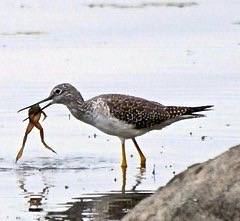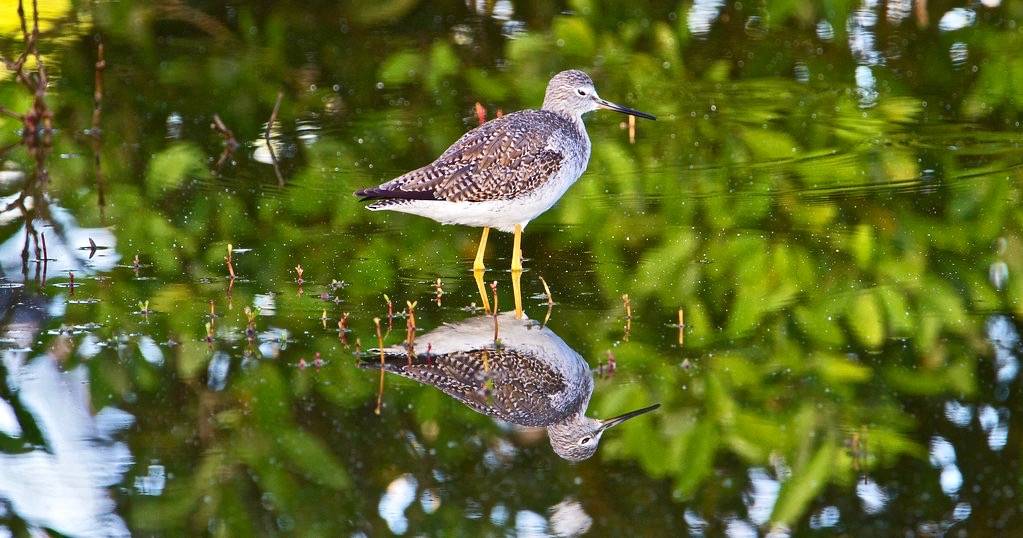Greater Yellowlegs
A likely place to see the Greater Yellowlegs at Salter Grove would be the boat launch at low tide during migration from April through May, and from August through October. This large shorebird can be seen walking on the exposed mud flats or wading in shallow water stabbing at aquatic invertebrates and chasing after small fish.
Although it is quite a bit larger, the Greater Yellowlegs has a plumage that is nearly identical to that of the Lesser Yellowlegs. The two are easily confused unless they are standing side by side. Unfortunately they are rarely seen together even though both species migrate through the park at about the same time of year.
The Greater Yellowlegs has a slightly upturned bill that may be grayish at the base and is 1.5 times longer than the width of the head in profile. In contrast, the Lesser Yellowlegs usually has an all black bill that appears thin and needle like and is about the same length as the head is wide. The Greater also characteristically gives off a loud "tew-tew-tew" as it flies off when it is alarmed.
Familiar enough during migration, not much is known about the breeding biology of this large and widespread shorebird species because it nests in the mosquito-infested wetlands of boreal Canada. The swarms of insects during the breeding season guarantees reproductive success for insectivorous birds but do not encourage extensive field studies.
Although it was a favorite game bird in the late 19th and early 20th centuries, the Greater Yellowlegs is now protected from hunters in North America by the Migratory Bird Treaty Act. However, it is still hunted in parts of the Caribbean where it spends the winter months. Unfortunately, it faces an even greater threat in the loss of wetland habitats within its wintering range.
For more information:
https://www.allaboutbirds.org/guide/Greater_Yellowlegs
https://www.audubon.org/field-guide/bird/greater-yellowlegs
https://en.wikipedia.org/wiki/Greater_yellowlegs
https://www.thespruce.com/greater-or-lesser-yellowlegs-386349
https://mirrormagic.com/2022/04/05/greater-or-lesser-yellowlegs/
https://www.birdzilla.com/bird-identification/id-skill-development/comparisons-of-similar-bird-species/comparison-of-lesser-and-greater-yellowlegs.html
https://www.fws.gov/law/migratory-bird-treaty-act-1918


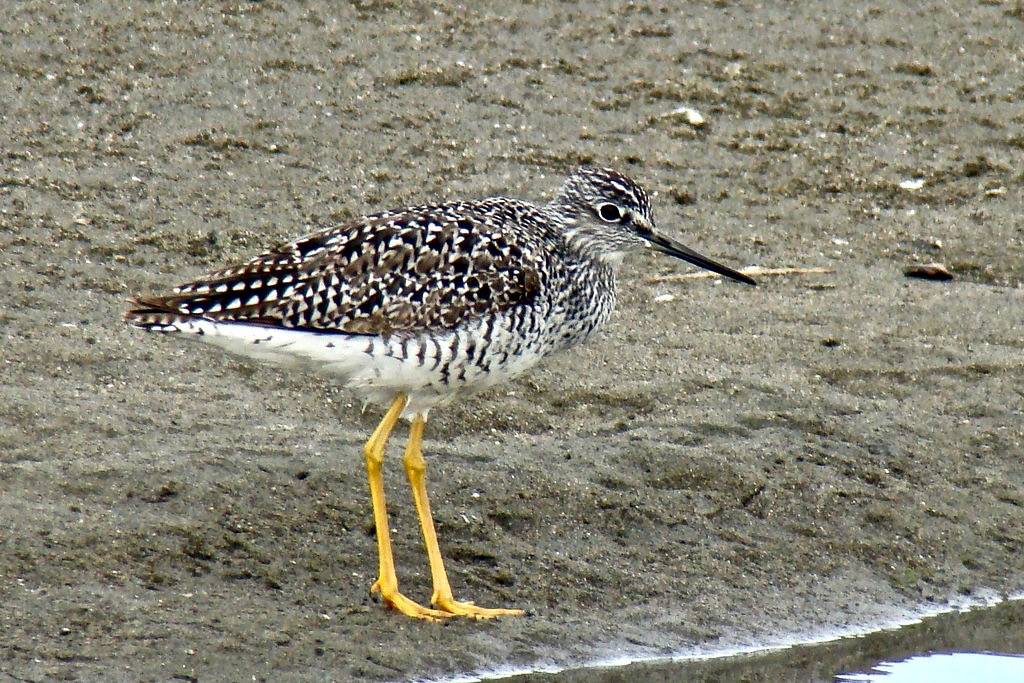
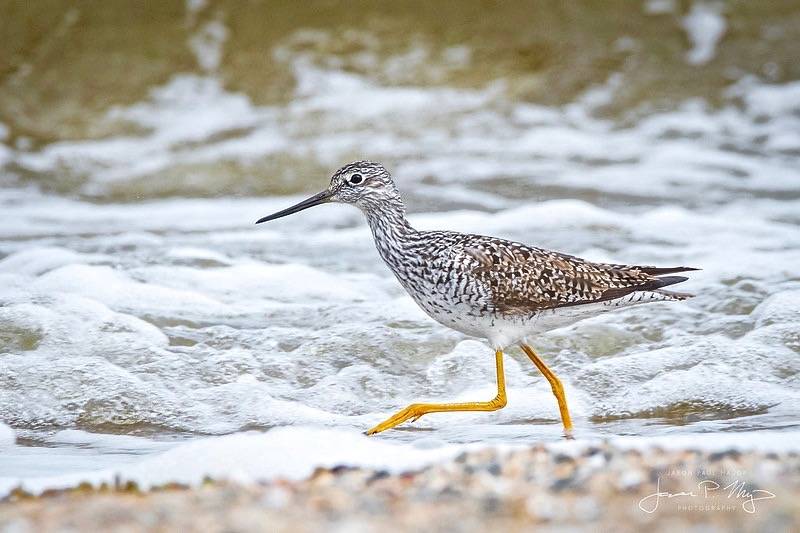
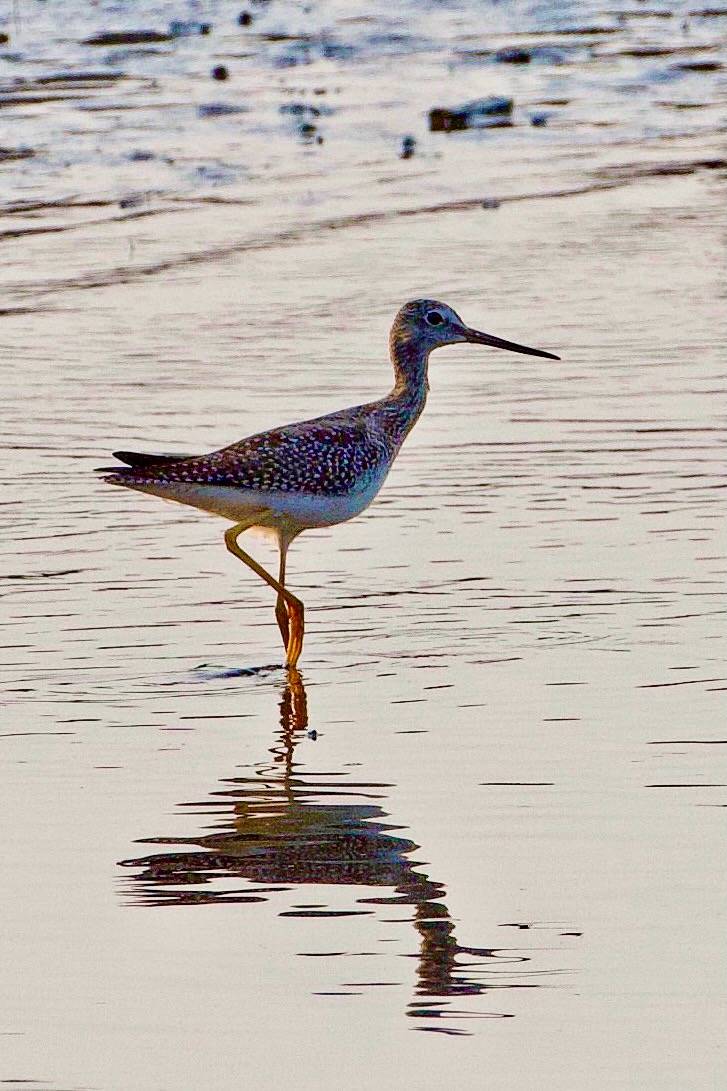
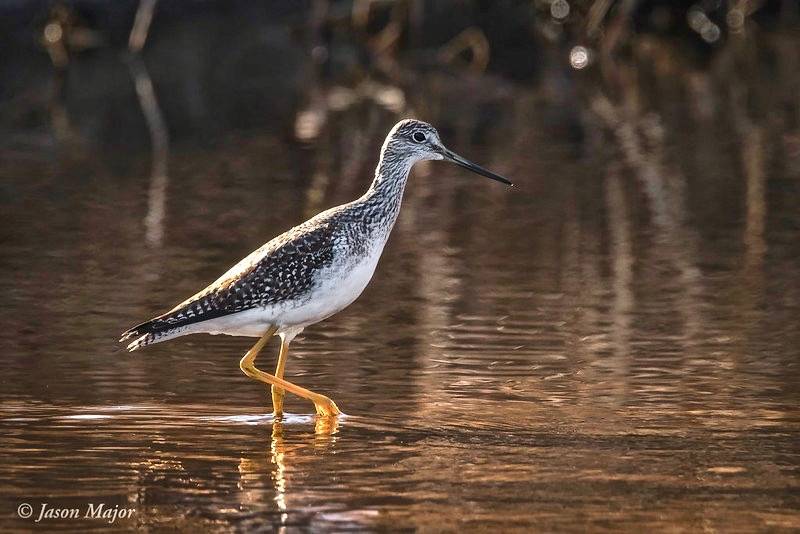
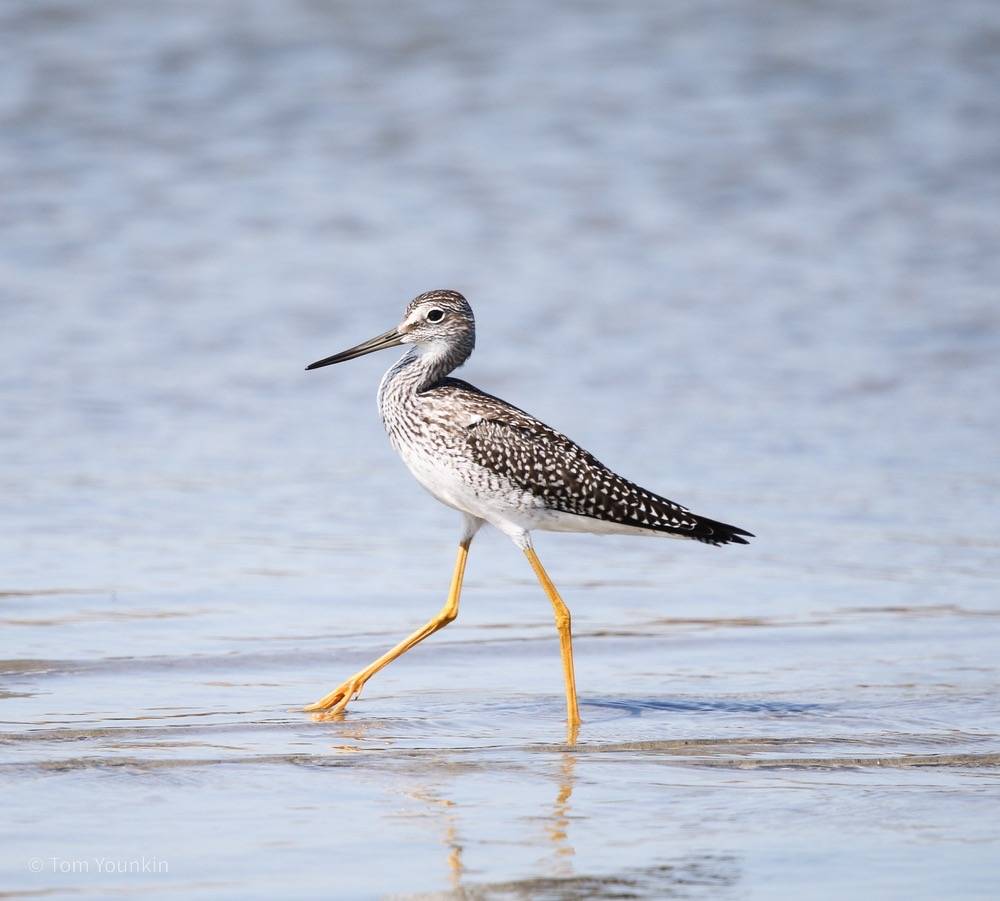


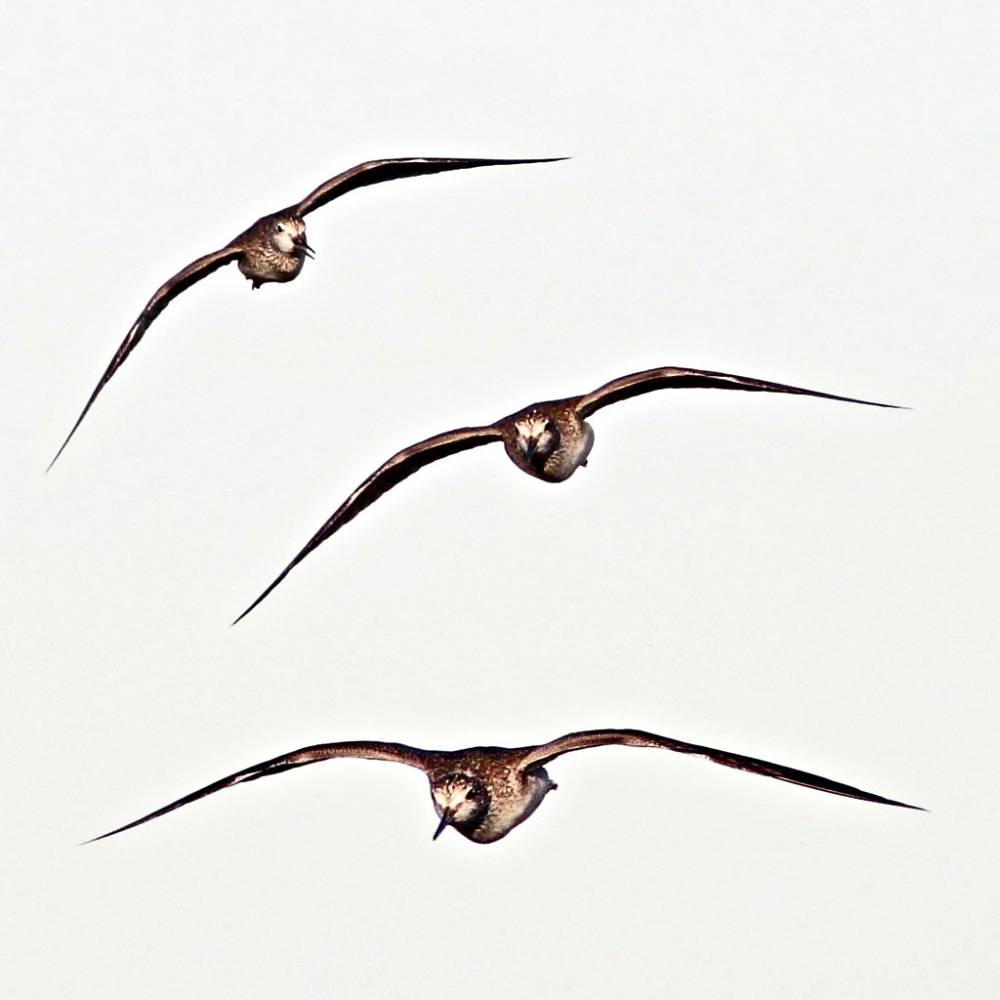
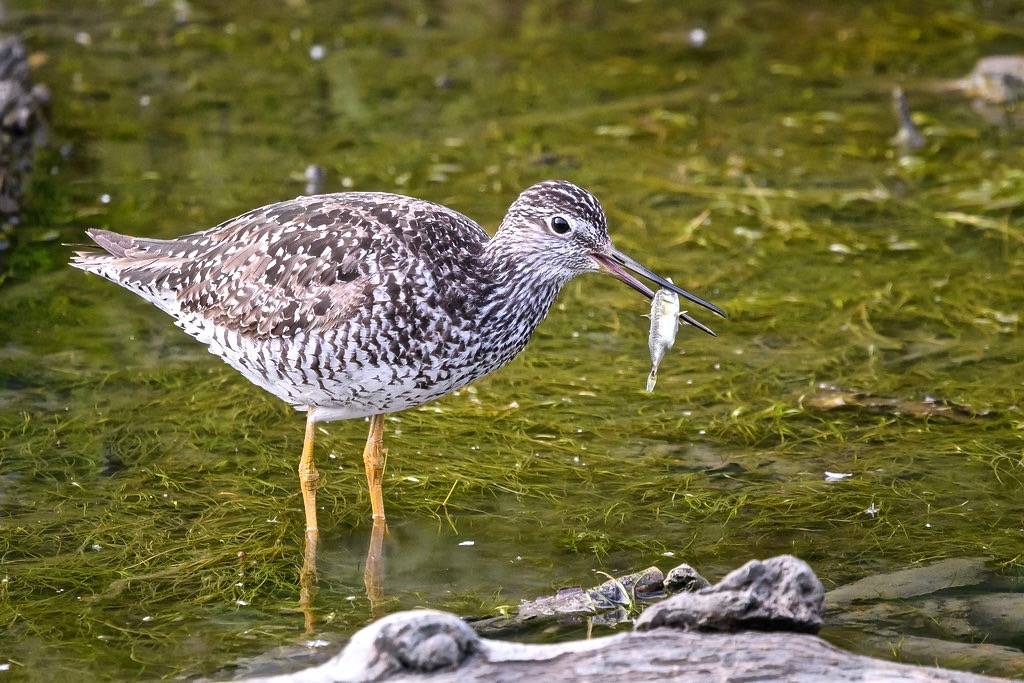
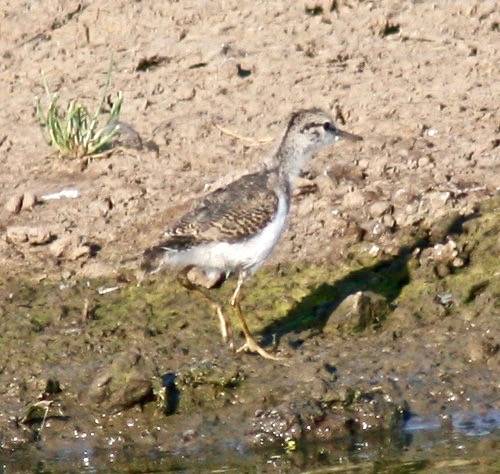
![Tigüitigüe grande [Greater Yellowlegs] (Tringa melanoleuca) + Playero coleador [Spotted Sandpiper] (Actitis macularia) by barloventomagico is licensed under CC BY-NC-ND 2.0](/_files/public/Bird Galleries/Greater Yellowlegs/11 Size comparison Greater Yellowlegs and Spotted Sandpiper 11-04-12 Boca del río Capaya, Barlovento, centro norte de Venezuela.jpg?w=350?blur=10)



